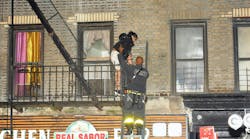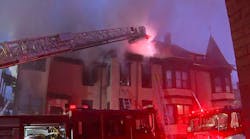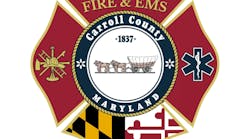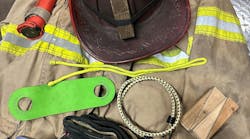The National Transportation Safety Board today released the following updated information on its investigations of two United States Department of Agriculture Forestry Service firefighting airplane crashes: Lockheed C130A at Walker, California on June 17, 2002; Consolidated-Vultee P4Y-2 at Estes Park, Colorado on July 18, 2002. Both aircraft were registered to Hawkins and Powers, Aviation, Inc., in Greybull, Wyoming.
On June 17, 2002 a Lockheed C-130A, N130HP, broke apart in flight while executing a fire retardant delivery near Walker, California. The three flight crewmembers were fatally injured and the airplane was destroyed.
The airplane was operated by the U.S. Department of Agriculture - Forestry Service for the public-use firefighting flight under 14 CFR Part 91. A company flight plan had been filed and visual meteorological conditions prevailed.
The airplane had departed Minden, Nevada, about 2:29 p.m., to participate in firefighting efforts near Walker. During the retardant drop the airplane's wings folded upwards at the center wing-to-fuselage attachment point and separated. The right wing folded just before the left wing. The crash occurred at about 2:45 p.m. Pacific Daylight Time.
The aircraft was delivered to the Air Force in 1957 and acquired by the U.S. Forest Service in 1988. At the time of the accident the aircraft had accumulated about 21,863 flight hours.
The second accident occurred on July 18, 2002, at 6:40 p.m. Mountain Daylight Time, when a Consolidated-Vultee P4Y-2, N7620C, operated by the U.S. Department of Agriculture - Forestry Service was destroyed upon impact into mountainous terrain near Estes Park, Colorado. A post-crash fire ensued. Prior to the impact, the airplane's left wing failed just inboard of engine number two. The left wing fractured at its wing-to-fuselage attachment point along the lower left spar cap.
At the time of the failure the aircraft was making a 15-20 degree left bank, preparing to drop retardant on a forest fire burning northwest of Lyons, Colorado. The 2 crewmembers on board the airplane were fatally injured. Visual meteorological conditions prevailed at the time of the accident. The public use flight originated in Bloomfield, Colorado and was being conducted under the provisions of Title 14 CFR Part 137, aerial application. No flight plan was filed.
The P4Y was manufactured in 1944 and was used first by the Navy and then transferred to the Coast Guard prior to Hawkins and Powers acquiring it in 1969. Total flight hours are unknown but from 1969 to the time of the accident the aircraft had accumulated 8,200 flight hours.
Fatigue cracks were found in pieces of wing structure in both the C130A and the P4Y airplanes. Both investigations are closely looking at the fatigue cracks as well as other safety issues, such as inspection and maintenance procedures and operational factors. In both investigations, the Safety Board is collecting data to determine why the cracks initiated and propagated to the critical length that caused the wings to fail catastrophically.
Although metallurgical examinations of both aircraft are ongoing the preliminary results for both have indicated that widespread fatigue was not evident over the entire wing but that in some locations current crack detection techniques may have been unreliable.
The Safety Board is working with the United States Air Force, Lockheed, Hawkins and Powers, and the Forest Service to review pertinent inspection and maintenance performed on the wings' structures throughout their service history. The Safety Board is monitoring the efforts of the FAA and industry representatives to develop appropriate and effective inspection and maintenance requirements to address critical fatigue areas.
Although initial performance calculations for the C130A's flight have been completed, additional information on fuel weights and gust load factors is still being refined in order to get a more accurate depiction of the loads the airplane experienced during the accident sequence.
During a C-130A contract pre-award evaluation in 1991, the Department of the Interior's (DOI) Office of Aviation Services inspectors concluded that essential inspection and maintenance services' critical to sustaining the airplane in an airworthy condition under normal operating conditions were not being accomplished with the C130A. This prompted the DOI, in 1993, to prohibit the use of the C130A on DOI land. The FAA and the DOI subsequently developed an action plan to address many of the same inspection and maintenance issues seen in the most recent C130A and P4Y accident investigations. Since that time the DOI has dropped its restrictions on the C130A and the Safety Board is investigating how the FAA and the DOI followed through with the proposed action plan and what corrective measures were put in place.
Based on this information, the Safety Board will explore whether the C130A and P4Y events were unique or a sign of systemic problems with military surplus aircraft now in public use operations. The investigations are reviewing continuing airworthiness issues including the original design intent, engineering support, mission profile, operating limits, inspection intervals and techniques and life limits of both these surplus military airplanes and relating that to the current mission for which the Forest Service is using them to determine if the airplanes' design and operational limits are appropriate for its current intended use.





